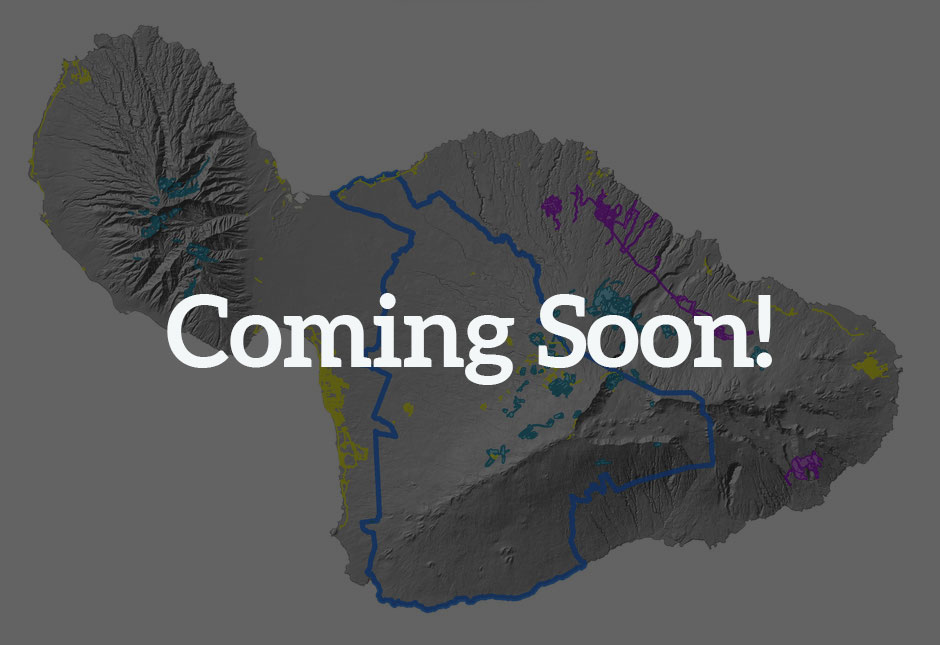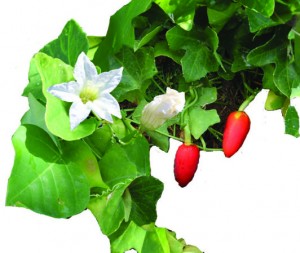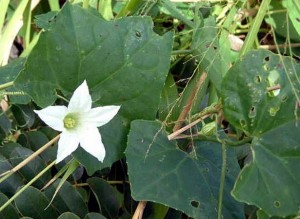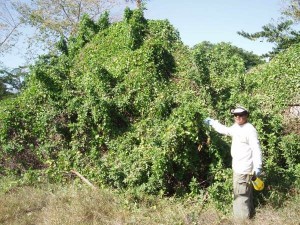
Ivy Gourd
Coccinia grandis
Report if seen anywhere on Maui

Known from and potential habitat
Species Info General
Family: Cucurbitaceae
The Division of Forestry and Wildlife of the Hawaii Department of Land and Natural Resources has designated this species as one of Hawaii’s Most Invasive Horticultural Plants.



Identification/Description
- Fast-growing vine with ivy-shaped leaves, white flowers, and 1-3 inch long red fruits.
- Native to tropical Africa and Asia, introduced to Hawaii as a backyard food crop (known as “Thai spinach”).
Impacts
- Vines grow over and smother vegetation, and cover fences and power lines.
- Threatens natural and managed areas.
- Difficult to control because plants regrow from deep roots, even after treating with herbicide.
- Although ivy gourd requires cross-pollination between male and female plants, it is able to spread quickly and can grow up to four inches per day.
In Hawai’i
Localized infestations occur in Kapalua, Kihei, and Lahaina. Isolated plants have been seen in Kahului, Makawao, and Waiehu. MISC is working to control or eradicate.
Control info/Info on what MISC does about it
- Coming Soon!
